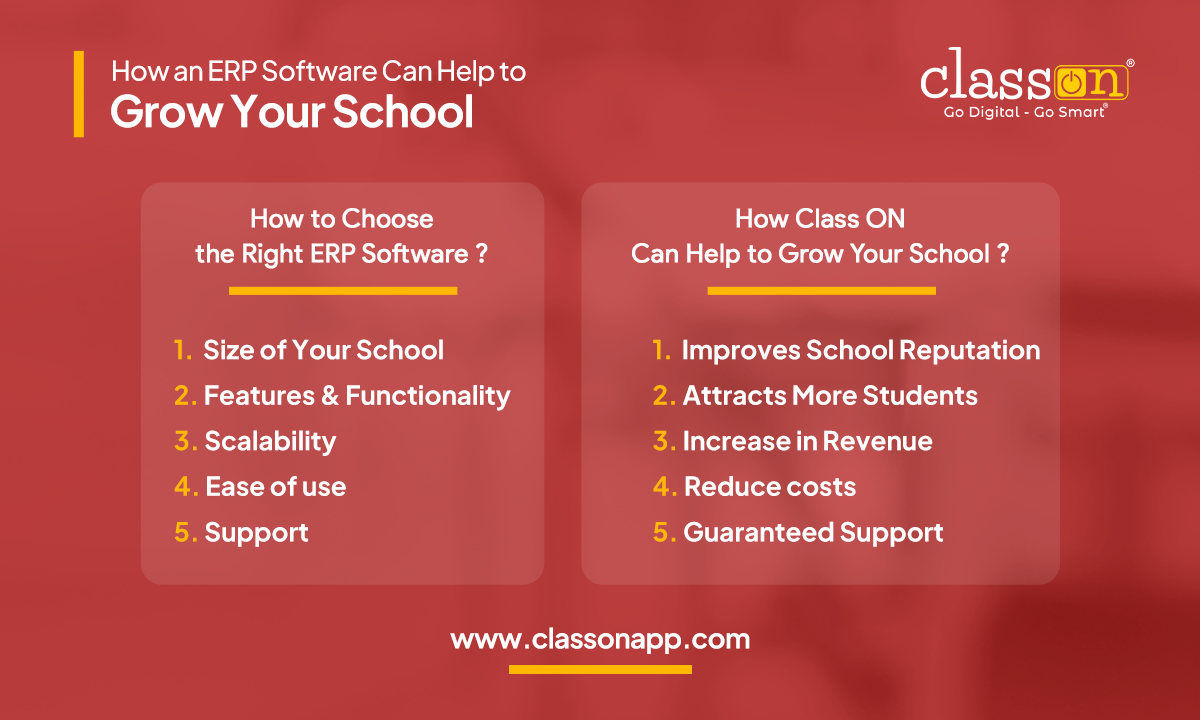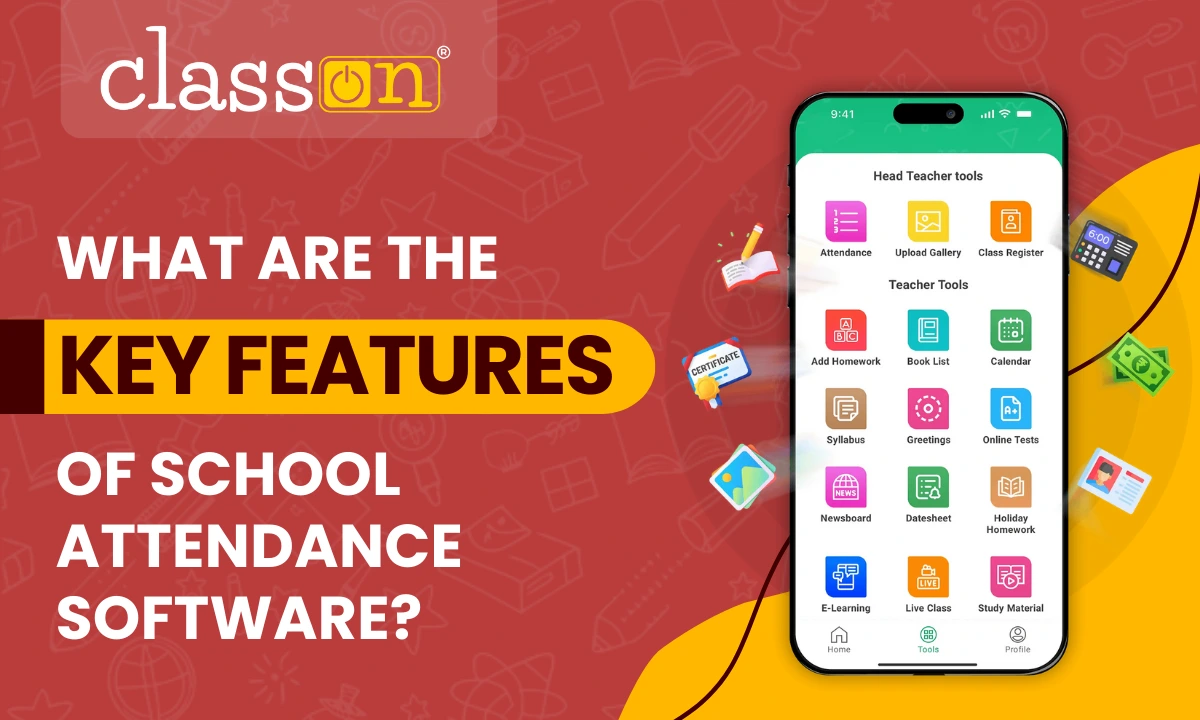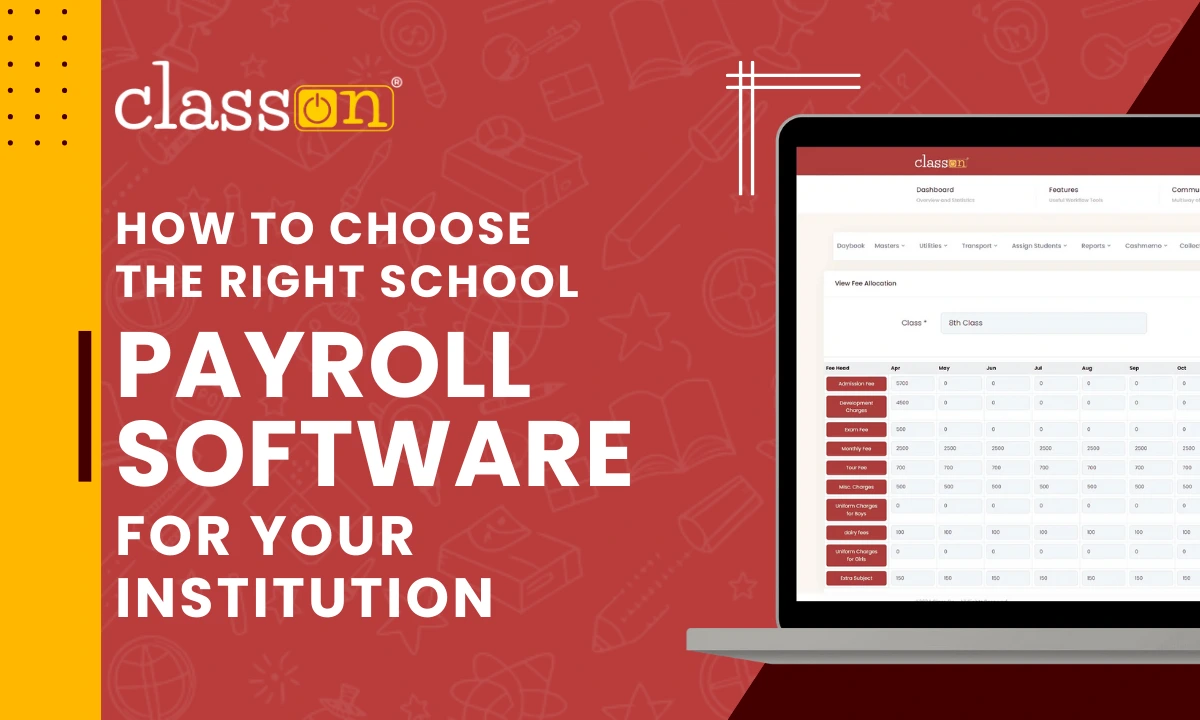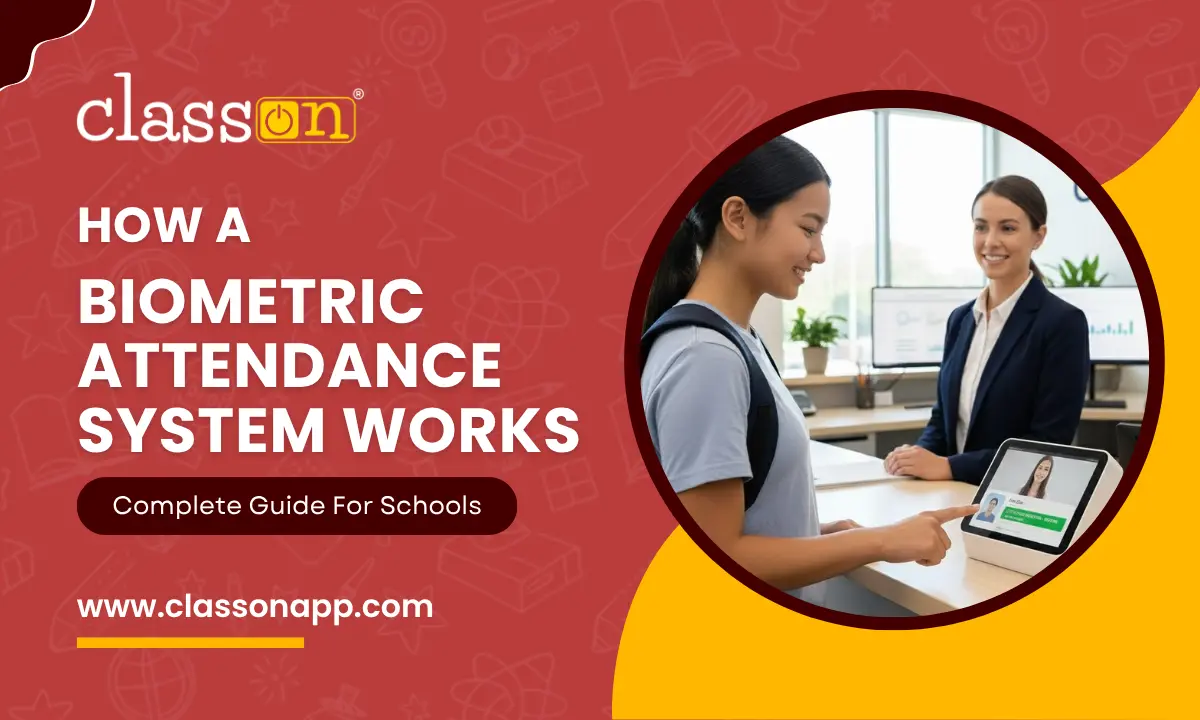
Enterprise Resource Planning (ERP) software is a comprehensive solution that integrates core school functions—such as student records, academics, finance, human resources, and operations—into a single system. By using Class ON ERP software, schools of all sizes can streamline processes, improve communication, and automate routine tasks for greater efficiency and effectiveness.
Benefits of Class ON ERP Software for Schools
There are many benefits to using ERP software in schools, including:
- Improved efficiency: School ERP software can help schools automate many manual tasks, such as student registration, attendance tracking, and fee collection. This can free up staff time to focus on more important tasks, such as teaching and student support.
- Increased accuracy: ERP software can help to improve the accuracy of data entry and reporting. This is because all data is stored in a single system, which eliminates the risk of errors caused by manual data entry.
- Enhanced communication: ERP software can help to improve communication between all stakeholders in a school, including students, parents, teachers, and administrators. This is because ERP software provides a central platform where everyone can access the information they need.
- Improved decision-making: ERP software can provide insights into school performance, such as attendance rates, test scores, and financial data. This information can be used to make better decisions about how to improve the school.
- Enhanced student outcomes: When schools use ERP software to improve their efficiency and effectiveness, this can lead to improved student outcomes. For example, students may benefit from more personalized instruction, better access to resources, and a more supportive learning environment.
How Class ON ERP Software Can Help to Grow Your School
ERP software can help schools to grow in a number of ways. For example, ERP software can help schools to:
- Improve their reputation: When schools use ERP software to improve their efficiency and effectiveness, this can lead to a better reputation for the school. This can make the school more attractive to prospective students and their families.
- Attract more students: ERP software can help schools to attract more students by providing a more personalized and engaging learning experience. For example, ERP software can be used to create customized learning plans for students and to provide students with real-time feedback on their progress.
- Increase revenue: ERP software can help schools to increase revenue by streamlining their financial processes and by making it easier for parents to pay fees. For example, ERP software can be used to automate invoicing and payment processing.
- Reduce costs: ERP software can help schools to reduce costs by automating tasks and by eliminating the need for duplicate systems. For example, ERP software can be used to automate student registration and attendance tracking.
How to Choose the Right ERP Software for Your School
When choosing an ERP software solution for your school, it is important to consider the following factors:
- Size of your school: ERP software solutions are available for schools of all sizes. It is important to choose a solution that is right for the size of your school and its budget.
- Features and functionality: ERP software solutions offer a variety of features and functionality. It is important to choose a solution that has the features and functionality that your school needs.
- Scalability: ERP software solutions should be scalable to meet the needs of a growing school. It is important to choose a solution that can grow with your school.
- Ease of use: ERP software solutions should be easy to use for all stakeholders, including students, parents, teachers, and administrators.
- Support: ERP software solutions should be supported by a reputable vendor who can provide training and support to your school.
ERP software can be a valuable tool for schools of all sizes. By automating tasks, streamlining processes, and providing insights into school performance, ERP software can help schools to improve their efficiency, effectiveness, and student outcomes.






